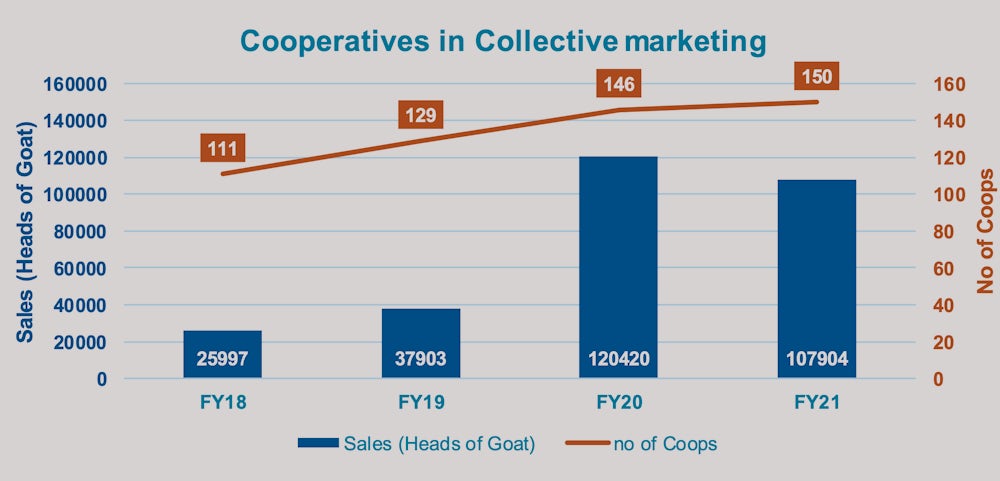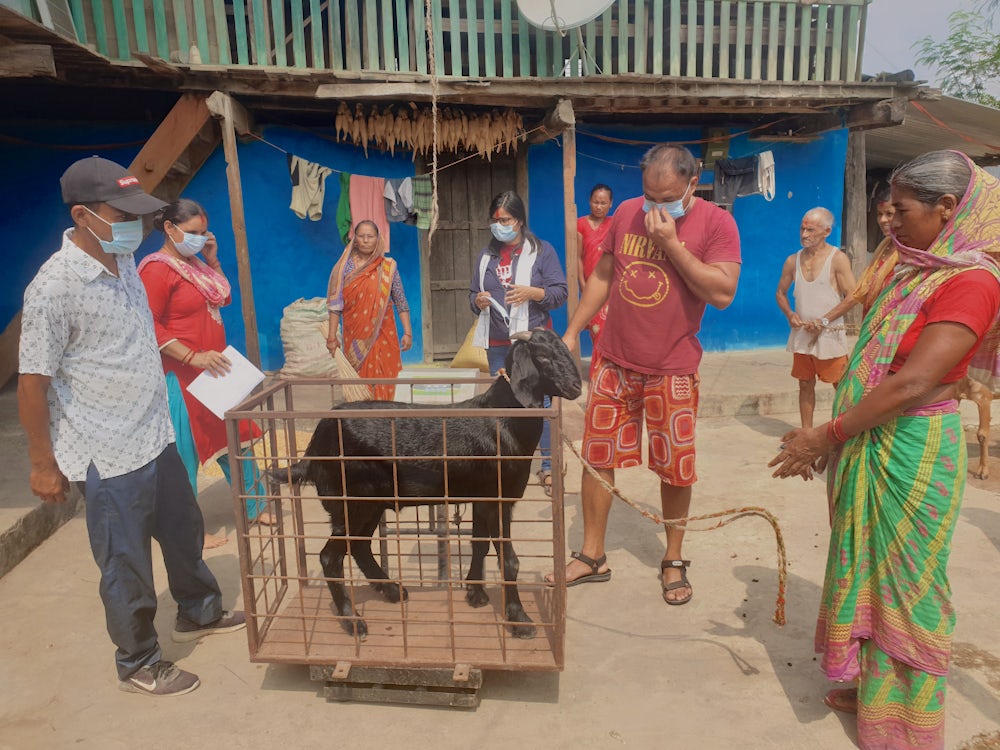The two-month festival season during October and November is prime time for goat farmers in Nepal as many goat producers earn up to 50% of their annual income during a typical festival season. But while demand for local goats in our South Asian nation has been growing steadily, this year has been far from typical. Buyers who have lost their jobs or seen their incomes decline due to the COVID-19 pandemic no longer have the money to spend on festive preparations like they normally would.

In spite of these challenges, our Heifer-partnered cooperatives sold 107,904 goats for a total of nearly $13 million. Cooperative members used the business training they gained from the Smallholders in Livestock Value Chain program (SLVC) to successfully launch marketing campaigns prior to the festival and negotiate with goat traders. One important aspect of the project is helping ensure goats are sold by weight, so farmers are paid what they deserve. Heifer Nepal also works at the national level to make sure farmers get a fair price for their goats, and this is reflected in the promising sales that we have seen this festival season.

The focus on healthy, well-fed animals sold by weight and not through ad-hoc market systems means that goat producers have been able to preserve their incomes despite falling demand this year.
Juna Tamang, a manager of the Laganshil Cooperative in Kalika, went into the 2020 festival season feeling apprehensive. Last year, she and the members of her co-op sold 1,300 goats. This year, it was a different story. “Last festive season, my phone wouldn’t stop ringing because I got so many calls from the buyers,” said Tamang. “This year the demand was quite low, and I received inquiries from only a few buyers, most of whom wanted to buy only a few heads of goats.”
To make matters worse, COVID-19 cases surged during festival time in Kathmandu. The country’s capital is home to the largest celebrations in the country during Dashain when families traditionally gather and eat a large meal that typically includes goat meat. Authorities discouraged gatherings, further lowering the demand for goats. Many goat traders became infected with the virus as well, leaving co-ops with no time to find alternate buyers.
Despite all of these challenges, our research has shown that goat cooperatives had a surprisingly successful festival season, netting 75% of their sales goal of 141,607 heads of goats. We are confident that they will continue their success and are committed to helping them along the path to a living income.
